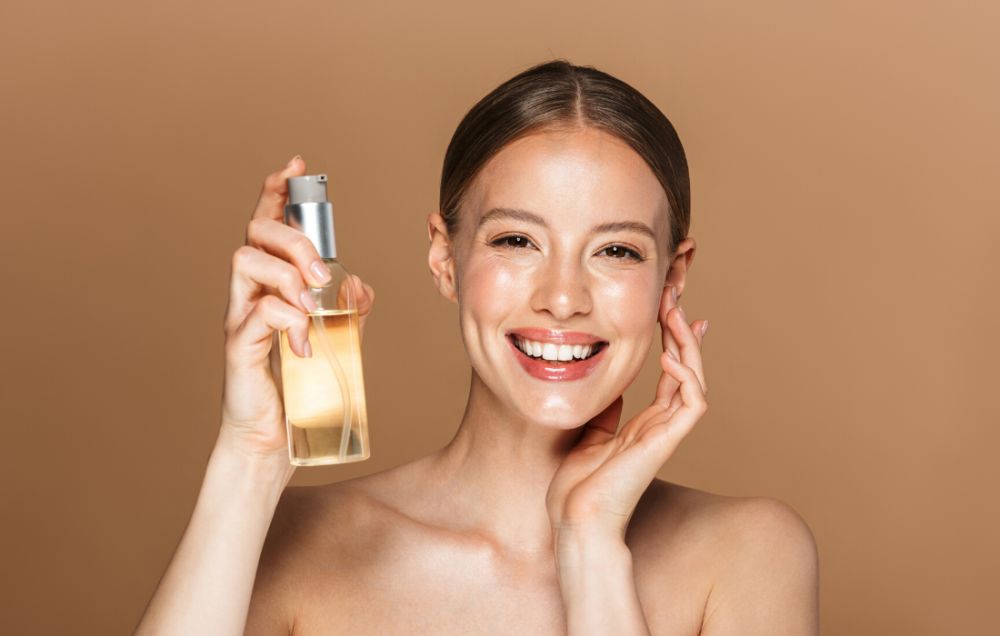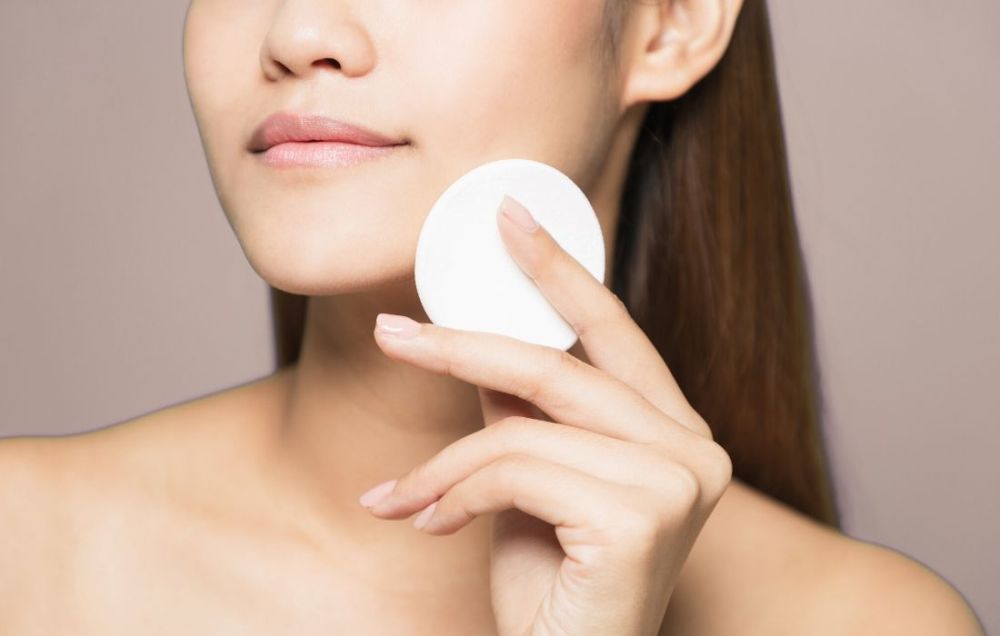You all must be familiar with the ten-step Korean skincare routine. If you are, then you must have heard about oil cleansing. Now, you might be wondering how to use it. So, we have put together this guide for you on how to use cleansing oil on your skin effectively.
Cleansing oils are specially formulated to be able to mix with the natural oils of your skin so that you can get a squeaky clean face without disturbing the natural oil levels of your skin.
So if you are curious about what cleansing oils are and how we should use it, then keep scrolling down for an ultimate guide on using a cleansing oil.

Contents
What is Cleansing Oil?
Oil cleansing is slathering your face with more oil than what it naturally produces. Women all over the world are swearing by this method. But there are still a few questions that remain. To begin answering these questions, the first thing we need to understand is what a cleansing oil is.
Cleansing oils are a way to remove your makeup apart from the traditional makeup remover. Since these cleansers are specially formulated to mix with the natural oils of your skin, it can also clean the dirt, dust, grime, and surface debris off your skin.
It also removes the excess oil that our skin naturally produces. Some of these cleansers are formulated with hydrating ingredients so that it makes your skin feel soft and smooth, thereby keeping it nourished and moisturized.
Who Should Use Cleansing Oil?
Cleansing oils can be used for all skin types because it is well formulated and leaves no residue. It can be easily rinsed with water, and you can use it with or without a foam cleanser as your next step.
However, whether you should or should not use cleansing oils depends mainly on two factors: the amount of waterproof makeup you use and your preference. If you use too much waterproof or long-lasting makeup, then you might want to use cleansing oils as it breaks down the makeup gently without having to scrub it too hard.
Using a cleansing oil will also spare you the use of separate makeup remover. Cleansing oils use good oils to remove the bad oils from your face. They also contain anti-oxidants and anti-aging ingredients to improve the appearance and texture of your skin. This is why cleansing oil can be used even by people with mature skin.
However, people with sensitive or acne-prone skin might want to find an oil cleanser that does not include fragrance as it may cause redness or irritation. Also, oils that are not combined with emulsifiers or surfactants must not be used by oily or combination skin people as it makes their problems worse.
Step-by-Step Guide on Using Cleansing Oils
There are two ways to use cleansing oils: basic oil cleanse and Korean double cleanse. Basic oil cleanse works great for all skin types, and Korean double cleanse will cater better oily, combination, and acne-prone skin, although you can use any of the methods depending on your preference.
Note: Before you start any of these methods, you must always do a patch test just to see how your skin reacts to this.

#1. Basic Oil Cleanse
-
Choose a right cleanser
With the advancement in technology, there are several oil cleansers available in the market, depending on skin type and concerns.
People with oily skin must look for oil cleansers that say non-comedogenic. Dry skin people must look for more hydrating and moisturizing ingredients. People with sensitive skin should strictly stay away from fragrances. However, if you are looking for a more natural oil cleanser, then you can DIY your oil cleanser at home combining olive oil, castor oil, and jojoba oil depending on your skin type.
-
Application
Once you are done selecting the right cleanser, take two pumps of the cleanser on your palm and massage it gently on your face with your fingertips. Be sure to apply it on a dry face so that it breaks down all your makeup, including the oil and dirt in your face. Allow the oil to stay on your skin for about two minutes so that it can penetrate deeply and work its magic.
-
Rinsing
When it comes to rinsing your face after an oil cleanse, you can use a warm washcloth to wipe the oil gently, or you can rinse it with warm water. While using a washcloth to do it gently and avoid pressing it too hard or scrubbing your face as it can irritate your skin, causing further breakouts.
Once you are done rinsing, you should feel your face be hydrated, soft, and smooth. Oil cleansers cleanse your face sufficiently without making it dry or tight. Once you are done with this pat your face dry and follow it up with a moisturizer.
#2. Korean Double Cleanse
People with oily or acne-prone skin might find this double cleansing method useful. This method gently removes any residue left by oil cleansers so that they do not have to worry about anything clogging their pores.
- Use an oil cleanser that suits your skin type and skin concern. Gently massage the cleanser to break down all the makeup and debris from your face.
- Let the cleanser sit on your face for about 1-2 minutes and then wipe it with a wet washcloth or rinse your face with warm water.
- Follow it up with a gentle foam cleanser to remove any residue left on your skin.
- Pat your face dry
- And use a moisturizer if you feel the need.
How To Choose an Oil Cleanser?
If you want to reap the benefits of an oil cleanser, then you must find one that suits your skin type and the specific needs of your skin. Choosing an oil cleanser depends mostly on how oily your skin is. Other factors like acne, dryness, aging and other factors also matter. So here, we are going to share with you how you should choose cleansing oils depending on your skin type.
-
Oily skin
For oily skin, you should find non-comedogenic oil cleansers. Ingredients such as avocado, olive oil, and coconut oil are thick and heavy, and therefore they can clog your pores quite easily.
Instead of these, choose oil cleansers that contain peppermint oil or tea tree oil. These oils have astringent properties, and they can reduce and regulate excessive oil production on your face.
-
Dry skin
For people with dry skin, you should look for more nourishing and hydrating ingredients in your oil cleanser. Ingredients such as shea butter, argan oil, and camellia oil can keep your face nicely moisturized. Avoid ingredients such as tea tree oil and lemon as they can dry out your skin even more.
-
Combination skin
People with combination skin always find it challenging to choose the right cleansing oil for their skin. It is because combination skin comprises both oily and dry skin types. So it becomes difficult to find a cleanser that will balance both these skin conditions.
Ingredients such as vitamin E and sunflower oil are best suited for combination skin as it effectively removes impurities while providing hydration.
-
Acne-prone skin
For acne-prone skin, look for an oil cleanser that is free from acne triggers and common irritants. Cleansers that use mineral oil can clog your pores and cause new breakouts; therefore, it is a big no-no.
Also, stay away from cleansers that contain fragrance as it might irritate your skin and cause inflammation. Look for ingredients such as AHAs and BHAs. These are acne-fighting ingredients that can thoroughly cleanse your skin and also reduce breako0uts.
-
Sensitive skin
People with sensitive skin can be challenged while searching for an oil-based cleanser. This is because nothing suits them as their skin reacts to every ingredient mentioned above. This is why they should find an all-natural oil cleanser, or they can make their cleanser using raw and organic coconut oil.
-
Normal skin
This is probably the most versatile skin type, as they can use any of the tips mentioned above to find their perfect oil cleanser. However, they need to find a lightweight cleanser and provide immense hydration to maintain the natural moisture balance of the skin.
FAQs about How to Use Cleansing Oil
-
Do you need to wash your face after using cleansing oil?
Oil cleansers can be wiped off with a warm washcloth. This will open up the pores and will remove any impurities or bacterias present that can cause breakouts. However, you can also rinse your face with warm water or can follow it up with a foam cleanser if you feel that oil cleansers have left some residue on your face.
-
Does cleansing oil clog pores?
The cleansing oil is all about choosing the right type of oil for your skin type. If people with oily or acne-prone skin choose products with coconut oil or use coconut oil for oil cleansing, then it can clog pores. This is because coconut oil is high on the comedogenic scale, and it can promote acne breakouts. However, if people with dry skin use the same oil, they will find it very hydrating hence if you are using a cleansing oil for the first time, it is advised to do a patch test to see how skin reacts to it.
-
How often should you use cleansing oils?
Cleansing oils can be used once a day, especially in the evening. This is because it can remove all the makeup, dust, and pollution our face endures the entire day thoroughly. Cleansing oil should not be used for more than two minutes as it can strip away the skin from its natural oils.
Conclusion
With this, we come to the end of our post. Oil cleansers are a great way to deep cleans your face while keeping it hydrated. After the oil cleansing, your face should feel soft and supple. However, if you face any irritation, inflammation, or breakout, we recommended seeing a dermatologist.
When using cleansing oils, is there a toner used after cleansing?